BACK
TO WEATHER-BLOG MENU
New!
Fine Art Prints & digital images for sale-
Welsh Weather
& Dyfi Valley landscapes Slide-Library - Click HERE
| Early
August 2010 was dominated by a north-westerly airflow across Wales,
with moist air getting drawn north-east - clockwise around the Azores
High, itself a bit to the north of its traditional position. The air
was drawn far enough north to be cooled in its lower levels and was
then fed south-east towards the UK, passing over the relatively warm
sea and receiving more moisture from it. The remnant warmth at higher
levels allowed frequent inversions to form, so that the convection was
shallow, with the resultant clouds topping-out in the mid-troposphere
and spreading at that height to form extensive cloud-decks, severely
limiting sunshine. Windy and wet at times too, the conditions have limited outdoor activities. The last time I went fishing was at Aberdyfi on the 2nd, where I found lesser weevers to be in abundance - I was catching them two at a time. This is a fish that demands extreme care in handling. The dark-coloured dorsal fin and the long spine on each gill-cover are both fed by venom-glands, so that if you get spiked, agonising pain and severe inflammation will quickly result and a trip to the nearest Casualty department is the usual outcome. So if you find a fish in a rock-pool that looks like the specimen in the photo below, don't touch! Most casualties though, outside of angling, are bathers who have trodden on them. Hopefully the photo will help someone avoid an unpleasant experience!  Occasionally, the weather improved enough to take the camera for a walk. One Sunday afternoon I revisited an area I used to walk frequently - the wide expanse of salt-marshes that forms the inner Dyfi Estuary below Tre'r-ddol, where Afon Clettwr flows out to join the main river-channel. The path runs down alongside the Clettwr, where banks of thistles were alive with butterflies: Meadow Browns, various Whites and Gatekeepers like the one below: 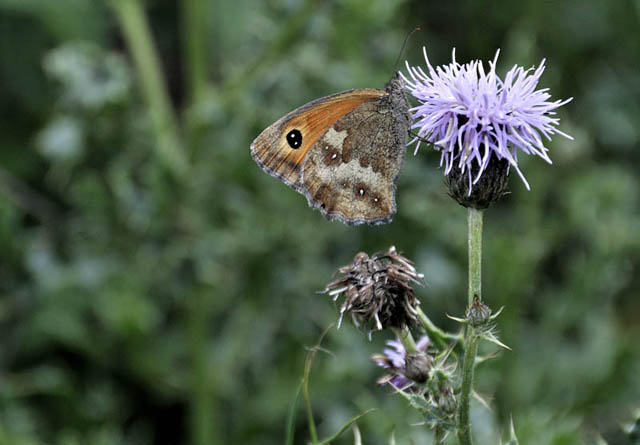 It took a while to get this shot - every time I got into position it took off again! 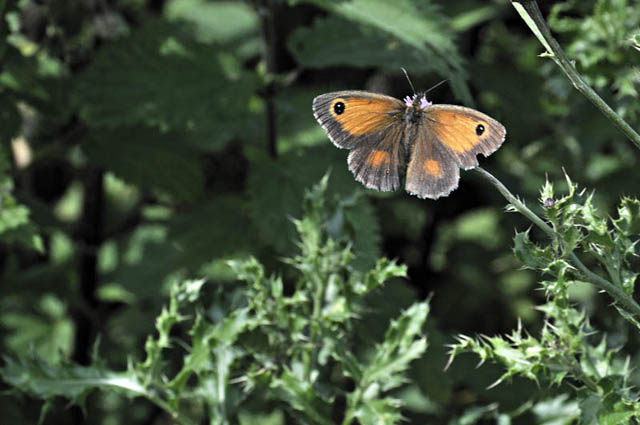 A pair of Wall Browns turned up. In my youth, these were a frequent sight in the Midlands where I grew up, but are relatively scarce now..... 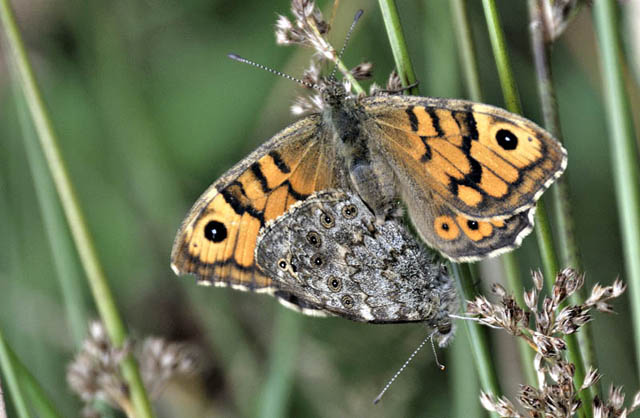 The path leads under the railway bridge over the Clettwr and out onto the salt-marsh, where a lot of detours have to be made to get round the creeks with their soft mud bottoms: 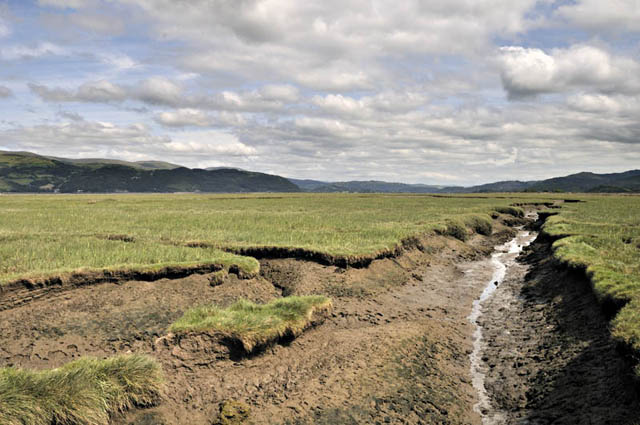 After various toings-and-froings, the heart of the Estuary is reached....  ...with its multiple, sinuous winding channels and isolated patches of marsh-grass and succulent salt-loving plants: 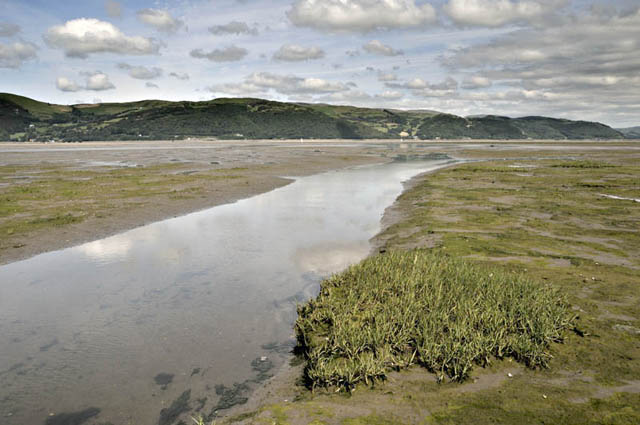 The Main Channel is less than a kilometre from the railway as the crow flies, but that distance can be easily doubled when the creek-dodging is taken into account! It's a peaceful spot, even at this time of year. 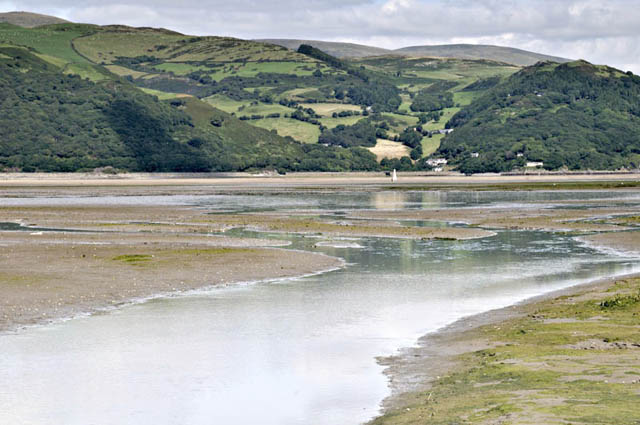 August 14th saw a bit of a change with low pressure over the North Sea bringing a slack north-easterly airflow across Wales. The unstable airmass convected readily and thunderstorms broke out in many areas. I wasn't expecting much over Wales but in the afternoon I noted a severe thunderstorm that had broken out over East Shropshire. Periodic checks revealed the storm to be hanging together as it crossed into Wales, with rainfall rates of the intensities that can cause flash-flooding. I figured that with such strong precipitation the storm might sport an impressive gust-front and, plotting its course, an intercept seemed possible just a few miles to my SE along the Mountain Road. On arrival up at the top of the road, the storm was approaching fast, here bearing down on the Trannon windfarm:  Zooming out, the storm was sporting a gust-front, albeit not a particularly photogenic one: 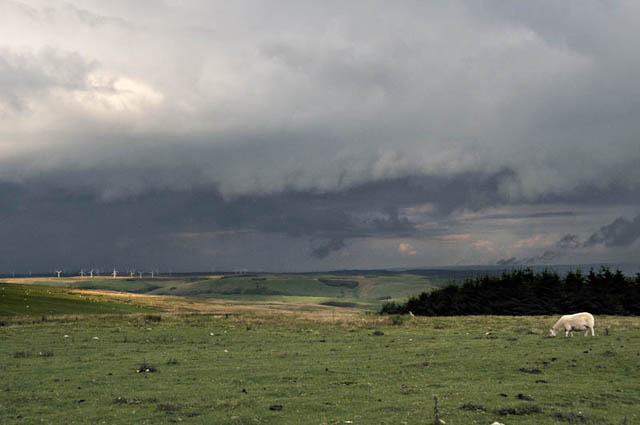 Although not that impressed, I decided to hang around and see what would happen next. As the gust-front came closer, a rainbow began to develop: 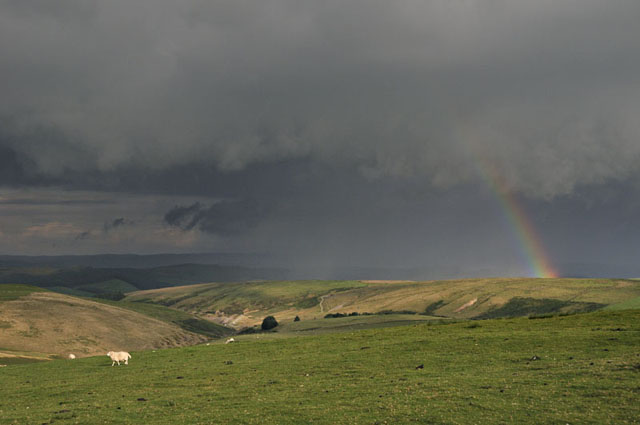 And in a moment the scene was transformed into one of great beauty! 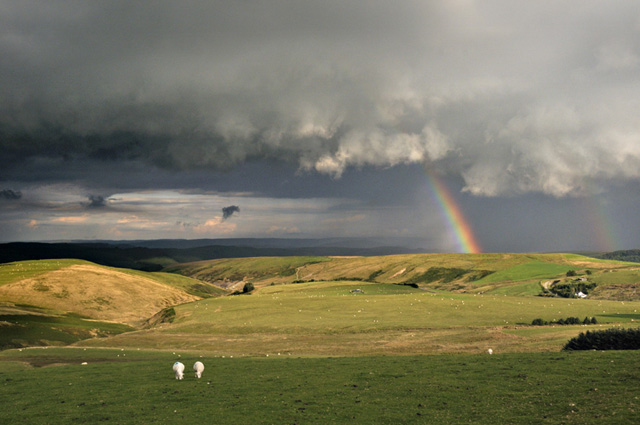 Here's a zoom-in. It's amazing how sun, cloud, rain and wind can interact to transform a drab view into a stunning one in a matter of seconds - and back again! The trick with weather photography is to be quick and decisive!  The above two photos, especially the first, show the land "inside" the storm to be in deep shadow. After the rainbow had faded I drove in under the gust-front to be greeted by instant dusk light-levels. This is a view along the inside of the gust-front looking south. 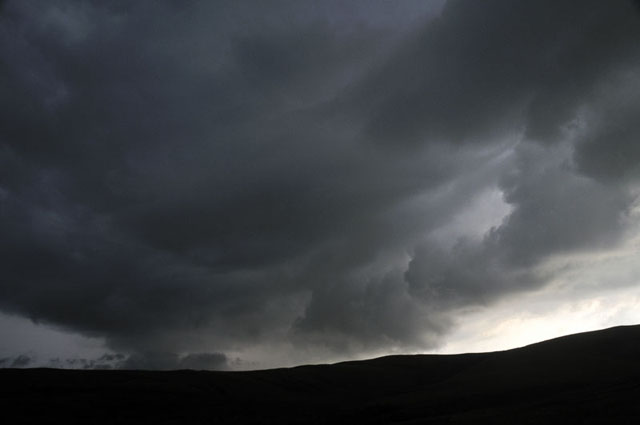 Given the difficult shooting conditions and the now pouring rain, I decided not to hang around. The gust-front had now raced well to my west and on the way home I never quite caught up with it, but during the descent of the mountain road, distant crepuscular sunrays appeared and composed for me another fleeting scene of natural beauty: 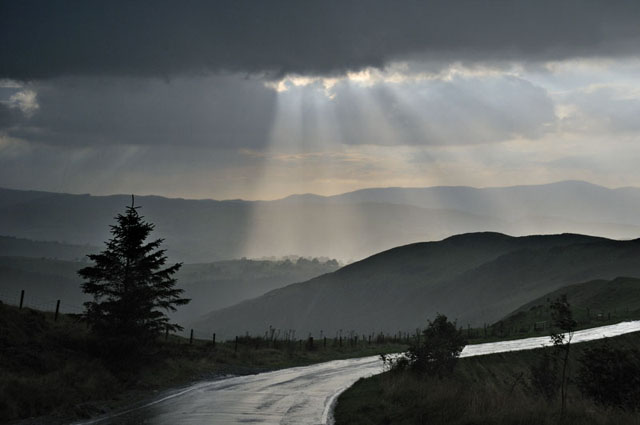 That was not an easy photo to take due to the lashing rain - I had to huddle over the camera to try and keep the lens dry. The leading edge of the gust-front can be seen along the top of the image. Moments later, the rays had gone and the scene was just another typical wet evening in Mid-Wales! On the 17th, the local Rotary club held an "air-day" to mark the 70th anniversary of the Battle of Britain and once again the cool cloudy nor-westerlies were in evidence. Many air-based events were cancelled due to the poor weather; the only fly-past was by this Tornado, which did produce something of interest in the shape of condensation vortices trailing from its wingtips: 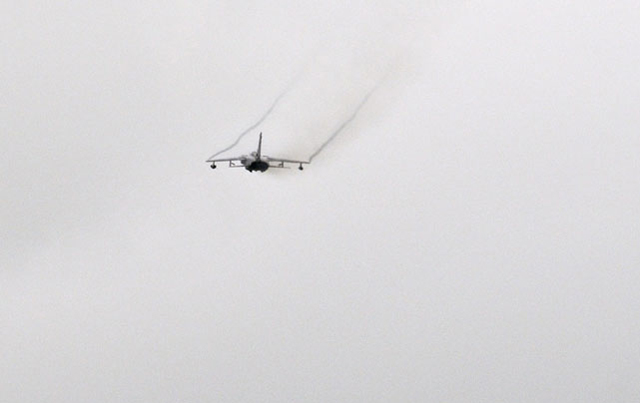 At last, on Sunday 21st, the clouds parted for a while and, with parents visiting, an expedition was held to look for bilberries in a local forestry plantation....  Between the three of us, over an hour or two we managed a couple of pounds of fruit from the heathery hillside, although had we been there a fortnight earlier we might have doubled that. The day brought to mind late-summer expeditions into the rolling hills above Aberedw in Radnorshire when I was forty years younger! The visits to that area every school holiday were among the highlights of my childhood, the time when I fell into lifelong love with this beautiful country and its people. 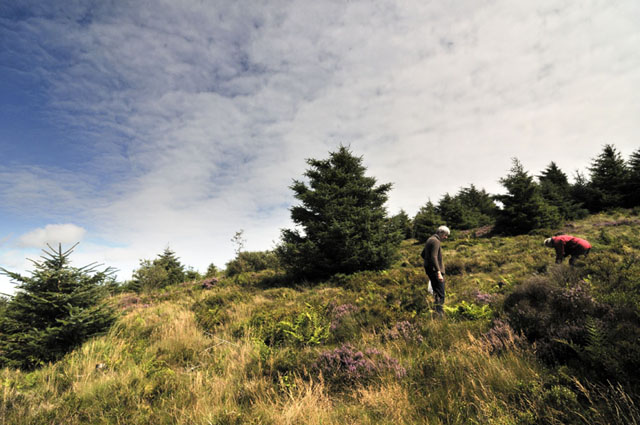 The cloudy, damp weather has kept everything happy over at the veg garden. Currently, I've got the shallots (below) and onions stacked in mushroom-trays in front of the fireplace where the guaranteed draught up the chimney is helping them to dry out nicely. All being well, there should be enough to last over the winter. Runner beans are now coming on in good numbers and it'll be time to harvest the maincrop potatoes soon - I'm waiting for a dry day for that - whenever it happens! 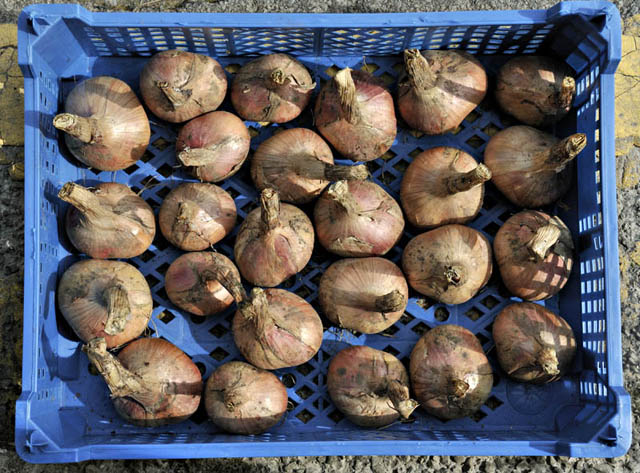 A pattern-change looks at least possible for the rest of the month, but it doesn't look like good news for some as the tropical storm season is now underway and we look to be in line for the remnants of some of these systems, which have the potential to give severe downpours and major flooding. If anything spectacular occurs, I'll be reporting on it in a few weeks! |
|
BACK TO WEATHER-BLOG MENU New! Fine Art Prints & digital images for sale- Welsh Weather & Dyfi Valley landscapes Slide-Library - Click HERE |